IN APRIL OF 2020, with roughly half the world’s population on lockdown, Billy Blanks stood in front of a video camera in the living room of his Los Angeles home. At age 65, the fitness icon wore a backwards ballcap with a sleeveless shirt and leggings that showed off his lean and muscular physique. He’d also recruited couple of bubble-friendly workout partners—his daughter, Angelika, and wife, Tomoko, both in casual workout gear.
Although he once filmed in fancy studios, Blanks seemed more than comfortable in the modest space. After all, this is exactly what his classic workouts were designed for: In 1975, Blanks created Tae Bo, an aerobic mix of martial arts and boxing moves that, by the late ‘90s had transformed him into the king of home workout videos.
“You guys ready to get down?” he asked the camera excitedly, before pumping up electronic dance music and leading his family in an energetic 25-minute Tao Bo routine.
While most people struggled to cope with the immediate reality of a global pandemic, the celebrity trainer decided that it might just be time for a career revival. “[People] needed somebody to get them about the couch,” he tells Men’s Health. So after the quarantine happened, he began posting workout videos to his Billy Blanks Tae Bo YouTube channel, formerly just a placeholder for his infomercials of the ’90s.
That first video, titled “Tae Bo For Real,” has since earned more than 772,000 YouTube views, and Blanks continues to offer free workouts regularly, sometimes as often as several times a week. These dispatches are rarely edited; in many of them, he’s not quite at the center of the frame and the booming music can drown out some instructions. But the outpouring of comments read much like the testimonies of his famous infomercials.
“Dear Mr. Blanks, I’m 65, and I’ve been doing Tae Bo for about 15 years now,” writes one commenter. “I have to tell you…. it literally SAVED MY LIFE!” Other longtime fans include the Kardashians, who once frequented his Los Angeles-based classes. (“It’s the best workout,” Kourtney Kardashian said in a May 2021 video for Vogue Paris. “Especially for like your obliques and abs.”) But Blanks is winning more fans from a new generation, too: He’s approaching a half-million subscribers on YouTube and offers a more polished version of his circuits on iTunes.
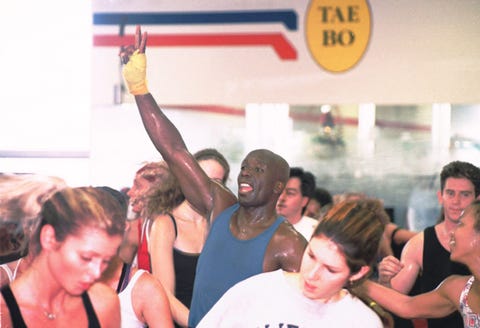
What’s often left unsaid is exactly how hard it was for Blanks to break through in an industry once personified by the likes of Jane Fonda and Richard Simmons, who embraced all things the ‘80s via headbands and leg warmers. He helped revolutionize fitness by fusing his experience as a United States karate champion and boxer. Tae Bo, he says, was originally designed to help women feel like they had a safe space. “I knew that women wanted to take karate but didn’t want to go to a karate studio with a lot of men in it.”

Part of Tae Bo’s early success was Blanks’ celebrity clientele of the Paula Abdul-sort who visited his first studio in Sherman Oaks, California. Through word-of-mouth, more people flocked to his space, conveniently just a block away from Jane Fonda’s studio. But worldwide recognition came in the form of Tae Bo’s video series and accompanying infomercials. In 1999, gross sales of Billy Blank’s Tae Bo Workout hit $75 million in just six months.
After a string of similarly successful tapes and the end of his marriage of 33 years, Blanks took a step back from the Tae Bo brand in 2007. He packed up his California home, moved to Osaka, Japan, and taught karate classes at local schools. When he decided to move back to California to raise his young kids in 2011, he was confident he could make the brand relevant again. “I figured it didn’t matter as long as I stayed in shape,” he says.

By then fitness looked a lot different. Boutique gyms like OrangeTheory and FlyWheel had emerged. Equinox Gyms had purchased a majority stake in a then-little-known spin class, SoulCycle. Blanks’ VHS empire largely created the template for this shift in training, next sold through DVDs, and later, on-demand workouts by everyone from Shaun T to Peleton. As a Black figure in fitness, where there are very real challenges for people from marginalized communities, ranging from access to affordable fitness spaces to a lack of trainers who look like America, his contribution to the industry has often gone underrecognized—though he’s not the person to make that case himself. When Men’s Health asked about his experience as a Black fitness icon, he was quick to change the subject.
“I think the marketing of fitness is different,” he says in response to questions of diversity in fitness. “I think because of social media, fitness is in people’s eyes, 24/7. Back in the days, when I was coming up, it wasn’t. But fitness is a household word now because of social media.”
Regardless, Blanks helped bring fitness into the living rooms of millions of Americans and hopes to continue accomplishing the same for a new generation of young people who’ve never heard of him, Tae Bo or even videotapes. While his workouts prove he’s fighting fit, Blanks says that focusing on his own mental health has helped stay ready for whatever happens next. He talked exclusively with Men’s Health about how what it’s like to be a fitness pioneer, and how to keep punching once you reach life’s later rounds.
Your fitness journey began with karate. How did you first discover it?
I used to watch The Green Hornet on T.V. I saw Bruce Lee fight and would always ask my mom, “Mom, I want to take karate.” She’d say, “Billy, we can’t afford it right now because [you] have so many brothers and sisters.” Eventually, they built a youth center in my neighborhood with a karate program. I went down to the youth center and this gentleman walked over to the door and said, “Hey, you guys want to take karate?” But the guys around me were saying, “Oh man, that’s for girls.” So I said, “No.” As soon as we got far enough away, I turned around and went back.
What was it about karate that spoke to you?
Well, karate spoke to me because it gave me an opportunity to see that I could be successful. I didn’t do good at school. I knew I was either going to get in trouble, go to jail, or get killed one day, growing up in Erie, Pennsylvania. Physical fitness was the way that [I’d] get out of the streets.
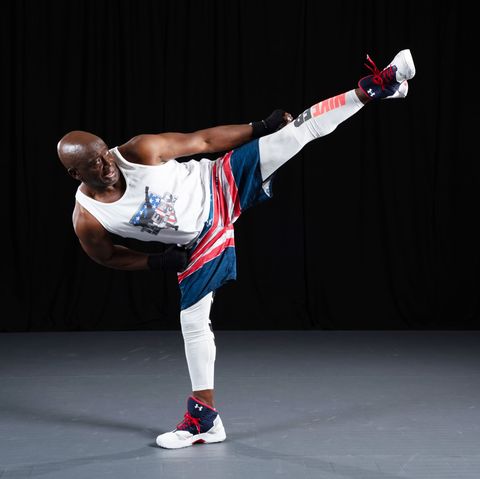
How did you first come up with Tae Bo?
This was in 1975. I’d just made the U.S. karate team. I was working out in my basement and started fusing all these exercises: calisthenics, punching, kicking. Within two or three minutes, I got so tired. I’m like, “Hold on. I’m supposed to be a United States champion.” So I started putting all [of these] exercises together to music. At that time, I called it Kaerobics. I knew that women loved aerobics. It had dance in it, karate in it, boxing in it, weight training, resistance training, flexibility training. It was the ultimate workout.
Why the name change?
I took ‘tae’ from Taekwondo and ‘bo’ from boxing.
How did Tae Bo then go from your basement to its own studio?
I was a bodyguard for an actress, Catherine Bach, who was shooting a movie in the Philippines. Every day, we’d get up in the morning and do a Kaerobics class, then I’d take her to set. She said, “Billy, you should move to California.” When I moved, that’s when I introduced Tae Bo to the world.
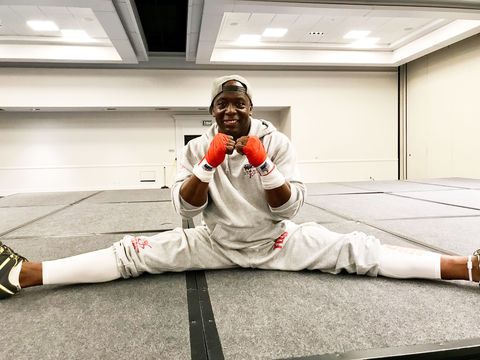
What was your first studio like?
My studio wasn’t the best-looking studio. I took a carpet out of the dumpster and cleaned it because I couldn’t afford to buy a carpet. But all these celebrities started coming in. Shaquille O’Neal came in every day. Then Wayne Gretzky and his wife, Janet. The place got so packed that people used to line up around the block to get in my studio. I even had valet.
Wow. That’s very L.A. Why do you think it took off like it did?
It was like a nightclub, but we exercised. You have beautiful women there. The music was very important. People saw that their bodies could change, and it made that studio become what it is.
You had a lot of competition. Jane Fonda’s fitness program was huge at the time. Why do you think Tae Bo rose above the competition?
Because Billy Blanks himself was there teaching. I think that intrigued people. I think when you go to celebrity studios, you [didn’t] see them in it. Jane Fonda taught some classes. But when she got to become a little bit bigger, then it was just [going] to Jane Fonda’s studio.
After the success of the tapes, you left for Japan. What was the reason for that?
I had just went through a divorce. Mentally, I needed to get my head together and I’d always wanted to learn martial arts from some of the greatest Japanese instructors. So I went over there and trained every day. I met my wife there and we got married and had a baby.
When you moved back to California, what happened next?
There was a Gold’s Gym near my house. I asked my manager to call there and see if they had a Tae Bo program and if I [could] teach there. My manager called the gym and the gym says, “Oh man, Tae Bo stuff is old. We got this thing called Turbo Kick,” and he hung up the phone. So I said, “Call him back and say, ‘Hey, I am Billy Blanks’ manager. And he wants to teach at your gym.'” The gym says, “Oh my God.” I ended up teaching Tae Bo there, four days a week for the next few years.
Obviously, wellness and fitness are so different now. How have you pivoted in response to all these new gym chains and fitness brands?
I always tell people when it comes to fitness, there is nothing new under the sun. People might put a little twist to it and try to make it look like something different, but really, it’s not new. It’s just how people present it to you. Even though I’m 65 years old, I stay in good shape. I’m still with the times. I still do martial arts. Every generation wants to learn martial arts.
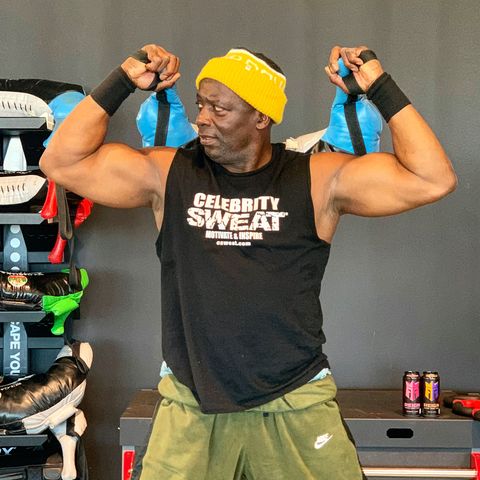
Why start a YouTube channel?
I felt like starting a YouTube channel was a great way to be able to communicate with people and [tell] people, “Billy Blanks is still out there, y’all he’s not gone. He’s still working out. He’s still teaching people.”
Do you approach fitness differently now than you did in the ‘90s? Are your videos more or less the same?
Back in those days, my goal was to get you in there, work you hard, make you sweat. Now, it’s getting you in there and getting you to focus. I see a lot of people come into a gym. The instructor puts the music on and all they do is follow what they do.
So you’re saying fitness is more about connection and mindset now?
That’s it. I don’t care about your body. Give me your mind and will and watch me help you take those two things and change your body. Now, I say, “Listen, without the mind, without the will, you can’t change the body.”
Fitness and wellness still have issues with diversity. What has your experience been like? Have you seen that change at all?
Like I said, I feel like when it comes to fitness, there’s nothing new under the sun, but social media [has changed] how you advertise and market fitness.
What do you think of the rise of fitfluencers?
Well, I think it’s good if a fitfluencer is who they say they are. In fitness, there’s a lot of guys out there that don’t really know what they’re doing, but they’re doing their best to be their best. But the diversity of social media [allows] you to be somebody. You don’t have to be a movie star. You can get on here and say one thing that might help, one person might hear it and they go, “Whoa.” Next thing you know, you become this influencer that said one thing that changed a person’s life. That’s how awesome social media is.
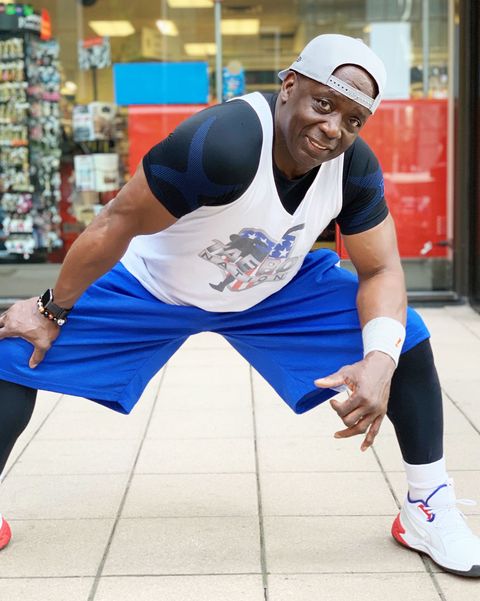
I hear you’re in recovery from hip surgery right now?
Yes, a hip replacement. I was born with a bad hip, so I had a hip replacement almost three months [ago] now. I was always in pain, but I have no more pain. And the doctor said because of what I do with myself physically and mentally, my body is six months ahead of what he thought was supposed to happen. I’m smart with training. I can squat and I can jump. I can kick, I can do everything. You’d never know that I had a hip replacement and it’s because of what I’ve done in my past. At 65 years old, I feel blessed.
What do you want to accomplish next?
I want to help people change their lives because this is a rough world, especially now [with] the pandemic. It’s rough. I’ve seen people’s lives go from here to there. I just want to train people, man. That’s my goal.
Source: Read Full Article